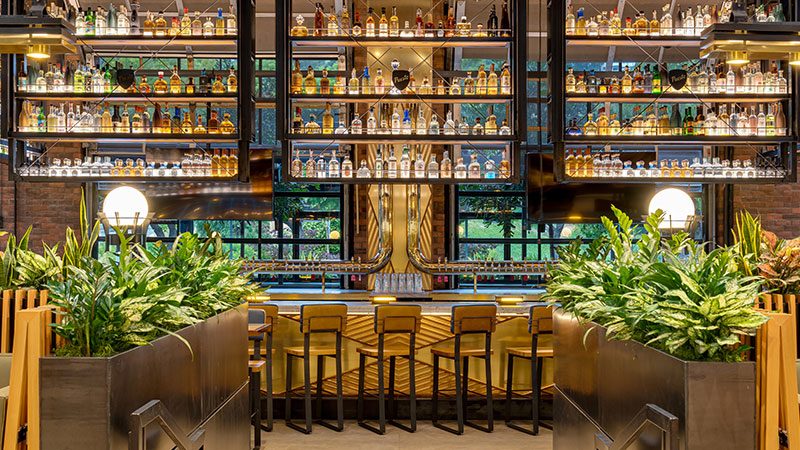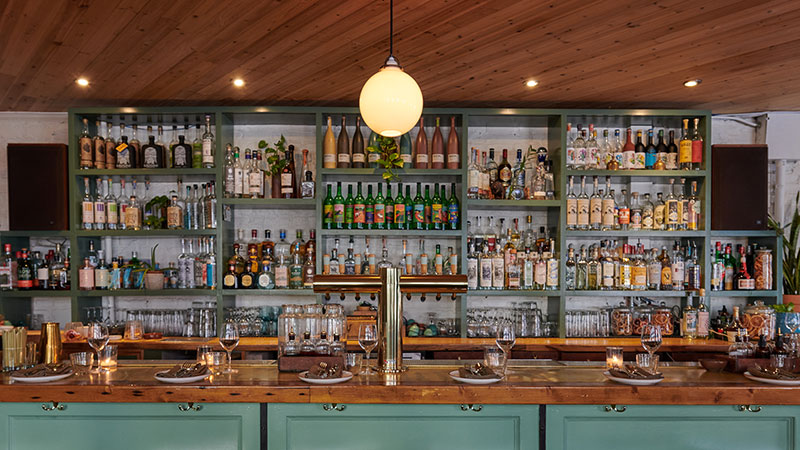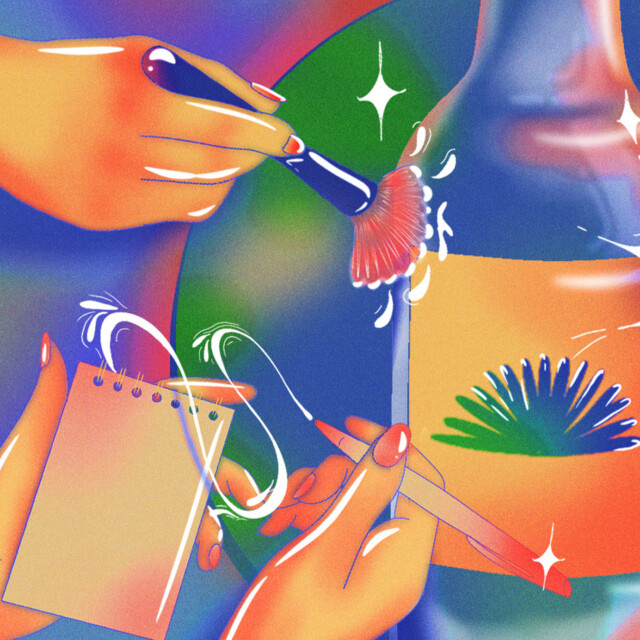Americans are having a torrid love affair with tequila. The agave spirit, two-thirds of which is consumed in the U.S. market, has been climbing in popularity for years. In 2022, tequila overtook sales of American whiskey — yes, that includes booming bourbon — by value, according to the IWSR. Currently, the category sits in second place, but it’s got No. 1 vodka in the crosshairs, too, with the IWSR predicting that tequila will assume the top spot within two years.
Such resounding success doesn’t come without complications, though, and tequila currently finds itself at something of a crossroads. On one axis are the powerful commercial and celebrity forces that are pouring resources into the category, hoping to claim a portion of its popularity, and the broad base of casual consumers who are responding to them. On the other are smaller-scale producers, most of whom are committed to making more traditional styles of tequila, and highly engaged consumers eager to taste and buy such products. The category is now starting to navigate a coexistence of these forces, which are sometimes, seemingly, in opposition. How it’s all going to shake out — and what tequila, in general, is going to taste like a few years from now — is anybody’s guess.
One thing is for sure: This is a defining moment for tequila.
100 Percent Agave Rules, but It’s Complicated
Not only are Americans drinking a lot of tequila; they’re drinking a lot of expensive tequila. Shanken News Daily reports that sales of super-premium ($25–$40) and luxury (above $40) tequila well outpace the category’s overall growth. And the overwhelming majority of those high-priced brands are made from 100 percent blue agave. Of the top 10 best-selling tequila brands as ranked by The Spirits Business, all but two are 100 percent blue agave.
This is quite a different picture from a couple of generations ago, when mixto tequilas dominated and the spirit was mostly seen as a cheap option for shots and bad decisions. Like other categories before it, tequila is following the premiumization trend, with consumers increasingly opting for higher-quality bottles. The 100 percent agave label serves as a guarantee of sorts — which makes it all the more puzzling that so many of those bottles actually are not 100 percent agave, but contain undisclosed additives that most consumers have no idea they’re drinking.
This is perfectly legal. The Consejo Regulador del Tequila (CRT), tequila’s regulatory body, allows up to 1 percent of the spirit’s volume to come from a set of approved additives. These include caramel coloring, oak extract, glycerine, and jarabes, a sugar syrup that itself can contain undisclosed, proprietary flavorings. Because the CRT doesn’t require disclosure, additive use in the industry is unknown but is estimated by Tequila Matchmaker to impact up to 70 percent of bottled tequilas. On the flip side, there’s also a significant proportion of tequilas that do not include additives: All their flavor comes from the agave and the production process.
Parsing the brands that fall into either camp is an impossible task. A brand may call itself “additive-free” but the CRT doesn’t currently take steps to confirm that, essentially using the honor system for such claims. Tequila’s marketing landscape is crowded with language about authenticity, purity, sustainability — and for the most part, drinkers just have to blindly trust that producers are telling the whole story.
But a side effect of growing consumption is the emergence of a niche subset of drinkers who are highly engaged, seeking education, and asking questions. And while their numbers are small, they have the potential to raise outsize awareness about the murkier aspects of tequila that could impact the category’s future.
Transparency on Additives
The leaders of the additive-free tequila movement are, without question, Grover and Scarlet Sanschagrin, American ex-pats who moved to Mexico after falling in love with tequila. In 2009, they started the Taste Tequila blog and eventually developed the Tequila Matchmaker app to provide other tequila lovers with comprehensive, organized information about brands and producers. In 2020, they launched the Tequila Matchmaker Additive-Free program.
It all came about after the couple themselves discovered the ubiquity of additives in tequilas they were drinking. “We found out a lot of what we were responding to was artificially added flavors: vanilla, sweeteners. [They] were mass produced, industrialized products that were made to taste and smell better,” Grover says. “We felt a little tricked, and inspired to learn more about traditional processes and who was doing it right.”
The Sanschagrins’ process for verifying that a tequila is additive-free is exhaustive, starting with a sensory test, to see if additives can be detected on the nose or palate, and including a visit to the distillery, extensive sample-taking, access to production and supply records, and sometimes lab tests. “Some distilleries have told us it’s pretty invasive,” Grover says (all brands that participate do so voluntarily). But the payoff is worth it, as additive-free brands land on the official list, which is consulted by consumers and the trade as a trusted, confirmed source of tequilas that actually taste like tequila and not, say, birthday cake or tutti frutti.
There are cascading effects on the entire tequila shelf, beyond the brands on the list. Tequila Matchmaker users can record flavors and aromas of anything they taste, a tool that helps them narrow in on notes that arise naturally or might be the result of additives. “By us creating a list for people to essentially calibrate their palates, they can go out there into the wild and detect additives in use, because if something falls outside of the capabilities within that normal range, then they know, whoa, something must be up here,” Grover explains.
The intention was never to “be some kind of police” or stand in for a regulatory body. “It was just to give people a safe list of brands,” he says. And it’s working. Even for brands that aren’t on the list, he says, people tell him, “I know it doesn’t have additives because it’s within that range that I’ve come to expect from following your list.”
The Sanschagrins can partly measure their success in the number of people joining Tequila Matchmaker; in the roughly three years since they started the additive-free program, membership has leaped 190 percent, from 83,000 users to 241,000 and counting. Where there were once 50 app signups a day, now there are 200 on average. The Sanchagrins also monitor social media extensively. “Just before we started the program, there was barely any talk of additives,” Grover says. “Now there’s not a single thread that goes on anywhere on Facebook or on TikTok or on Reddit that somebody, somewhere doesn’t bring up the topic of additives, and then a whole conversation about additives ensues.”
Why Tequila Is So Hot Right Now
Setting aside the issue of additives momentarily, it’s helpful to understand some of the driving factors behind tequila’s growth. First is the appeal of tequila as an authentically Mexican spirit, culturally tied to the land and its people — an identity that many brands promote with their marketing and imagery of toiling jimadores and spiky agaves. “We love the romance of tequila,” says Brian Livesay, beverage operations and training manager at the Matador restaurant chain in the Pacific Northwest, which boasts a deep list of tequila and mezcal at each location. “You’re drinking Mexico.”
The current wave of celebrity affiliations has also bolstered tequila’s popularity. “Celebrity ties have a great effect” on sales, says Mark Roy, spirits marketing specialist at the New Hampshire Liquor Commission, adding that some famous names attract more interest than others. David Larue, vice president of sales and merchandising at Florida’s ABC Fine Wine & Spirits, agrees. Celebrity appeal is “substantially more than it used to be, with the social platforms they have, the amount of people that they’re exposed to,” he says. “The ones that we see that work the best are the ones that incorporate it into their lives. If you follow The Rock, he’s always incorporating Teremana into his daily life. … And it translates to the shelf for sure.” Case in point: In April 2023, The Rock announced via Twitter that Teremana had sold 1 million cases in the previous year, and 2 million since its 2020 launch.
An even greater impact comes from packaging, which Livesay describes as “crazy, crazy important. When we’ve got a back bar that has 300 bottles on it, if there’s a bottle that stands out visually, that draws the eye, of course that’s going to have an advantage.” Roy has also observed striking bottles, like the tall, slender form of [Michael Jordan’s] Cincoro and the twisted glass of Adictivo, garnering attention and sales. “With the growth and the amount of products [available at retail], you’ve got to make yourself catch the consumer’s eye and stand out a little bit,” he says.
A Slow Education
What is not currently driving sales of tequila: interest in additive-free brands. Simply, the vast majority of consumers don’t know about additives, let alone care about them. “There are still so many people … that couldn’t tell you the difference between 100 percent agave tequila or a mixto,” Livesay says. “You mention tequila and they make that face because of that one night they had way back in their teens, then they’ve never had it since, [but] that are coming to us and asking for help and asking for assistance.” While Matador caters to hardcore tequila enthusiasts as well, the vast majority of guests aren’t part of that demographic.
At retail, the best-selling brands tend to follow the top 10 list, which is led by Jose Cuervo, Patrón, and Don Julio. Many, if not most, customers are buying tequila to mix — the Margarita is America’s favorite cocktail, after all — and Larue notes that price is one of their primary considerations, though everyone these days wants a bottle that they can show off. “Affordable luxury, that’s a critical thing,” he says. “Regardless of what type of economy is out there. People are still looking for that nice bottle that they can be proud of.”

In the on-premise, consumers appear more willing to explore, especially at bars with well-thought-out menus and a bent toward education. There are more opportunities for nuanced conversation and trial of tequilas outside the top sellers, a benefit to beverage directors like Beau du Bois, vice president of bar and spirits for the Puesto restaurant chain in California, who has been deliberately eliminating brands with additives in favor of additive-free bottles.
“The goal is transparency and education,” he explains. “What I always tell people is: Don’t you deserve to know you’re drinking a superior product rather than being bamboozled by a really high price tag, by a non-Mexican celebrity, or just the commercial washing machine that is marketing?”
But even du Bois admits that he can’t have a fully additive-free list, given Puesto’s size and the volume of guests it serves. “If I were to take a gun and shoot down every bottle of tequila that has additives in it, there would be very few left up there,” he says.
It’s the same at Matador, where Livesay has spent several years working on the list, aiming to provide a wide array of options that will match with any number of palates and price points. Additive tequilas “are inescapable at this point,” he says. Likewise, issues such as sustainability and organic practices, which are also important to him, can’t be the first priority when selecting brands to offer. “We have to look at the reality that we need hundreds and hundreds and sometimes thousands of cases a year of a brand” given the volume of Matador’s business, he explains.
Matador doesn’t have an explicitly additive-free agenda, and Livesay says that’s probably not realistic at this point, with consumer knowledge still at a basic level. “If you put a fire hose in front of people, they’re going to have a hard time drinking from it,” he says. But his goal is to eventually add to the menu information like whether a tequila contains additives or is certified organic. For now, he trains his staff to have conversations with guests and provide context for the bottles they recommend.

At Bar Lula in New York City, Julio Xoxocotla is doing the same thing, featuring a list that’s dominated by artisanal and small-scale tequila producers, along with a few of the big names. “We wanted to have a little bit of both spectrums of the tequila world,” he says. “We have some big brands like Don Julio and Cazadores, because we have to bring in different expressions so people can see the difference between a large producer of tequila and the smaller producers.” But Bar Lula doesn’t stock every top-selling brand; if someone asks for Casamigos or 818, “we’re able to present something that’s similar to that or something that has a lot more flavors of agave,” he says.
Why Some Producers Use Additives
As explained above, tequila additives are perfectly legal and widespread. Producers have their reasons for using them. Additives facilitate consistency from batch to batch; for example, caramel coloring, which is also commonly used in Scotch and other spirits, creates consistent hues for añejo and reposado tequilas that might pick up variance during barrel aging.
Additives also put flavor back into a spirit that’s distilled to near-neutrality, a more common practice nowadays as agave supply constraints are forcing many producers to use younger and younger plants. Typically, blue agave needs five to seven years of growing before it’s mature enough to be used for tequila, but as demand for the spirit has soared, less mature plants are being harvested. They get processed differently, often using a machine called a diffuser, and as a result, the spirit that emerges retains very little, if any, of the inherent agave flavors of traditional tequila. Hence additives, which don’t taste quite like those naturally derived flavors, but at least taste like something.
That’s a problem, though: Widespread additive use is potentially warping consumers’ perceptions of what tequila is meant to taste like. “I’ve seen distillers get tears in their eyes because they’re worried that these brands are going to force people to forget what traditional tequila is supposed to taste like,” du Bois says. This risks additive-free tequilas being rejected for not tasting “right,” even though they’re most true to the flavors of the agave. In some ways, it creates an existential conflict for the category.
Potential Peaceful Coexistence
Tequila isn’t the only spirit to allow additives. Many whiskeys include caramel coloring; Cognac producers commonly add caramel coloring, sugar, and boisé, an oak extract; outside of GI-regulated styles, rum can throw in practically anything it wants. Are the identities of these spirits threatened by their additive use? That’s a question for their makers and consumers to answer. Proponents often point to tradition — we’ve always done it this way, or at least for a very long time — as legitimizing the use of additives. But tradition doesn’t have to be a dictator.
Tequila might look at the history of American whiskey for some ideas about a way forward, where both types of spirit can coexist. Back in the 19th century, America’s whiskey industry was full of rectifiers — people or companies that purchased whiskey from distilleries and then tweaked it to create their own brands. Often that meant adding coloring, flavorings, and various unsavory ingredients to give young whiskey the appearance of maturity, or to impart flavor on otherwise neutral-tasting spirit. There was no transparency or regulation: no obligation for the rectifiers to disclose what they were doing or what was actually in the bottle.
Eventually, legitimate distillers raised enough outcry to prompt government action regarding the rectifiers, who threatened to pollute the entire industry’s reputation with their practices. What resulted was a series of laws, starting with the Bottled-in-Bond Act of 1897, that ensured a measure of transparency in American whiskey that persists to this day. No whiskey can be labeled “straight” if it has anything other than water added, but non-straight whiskeys — other than bourbon — and blends of straight whiskey may include up to 2.5 percent approved additives without disclosure.
Something like this could work for tequila if consumers, and in particular the industry, push for it. Additive-free and additive tequilas can coexist. “Obviously there’s a market for additives in tequila — it’s a huge seller,” says Grover Sanschagrin. “It’s valid for there to be a vanilla-flavored tequila. Lots of people love that, that’s fantastic. … What about the people who don’t want that? [Right now] there’s no way on the labeling to be able to distinguish that.”
But soon there may be. The CRT announced at the end of March that it would be rolling out a certification mark for “Naturaleza Libre de Aditivos Producto Certificado” — Nature Free of Additives Certified Product. Details on what exactly this would entail are forthcoming. If it’s as rigorous as the Sanschagrins’ process, it will be a huge boon for transparency-seeking consumers. If it’s not, it could end up doing more harm than good, at least as far as consumers are concerned.
For now, tequila will keep pushing through the muddle of interests — commercial, artisanal, environmental, cultural, sensory — that are pulling it in all directions. Most tequila drinkers won’t even register that such varied forces are in play. But if they eventually decide to dig deeper, there will be enough information, easily in reach — and plenty of brands to try — to draw their own conclusions.
This story is a part of VP Pro, our free platform and newsletter for drinks industry professionals, covering wine, beer, liquor, and beyond. Sign up for VP Pro now!
